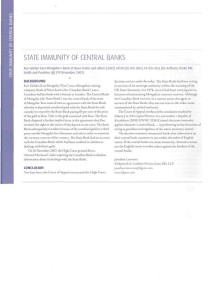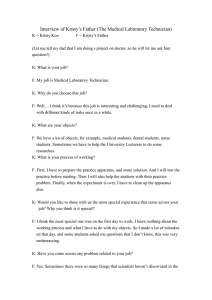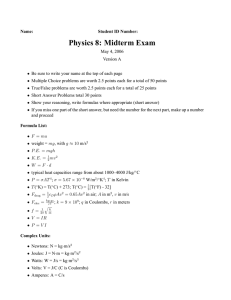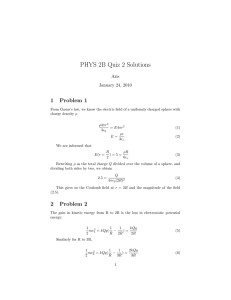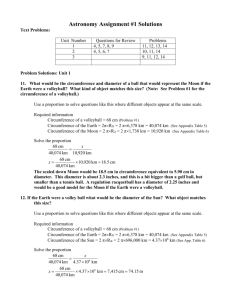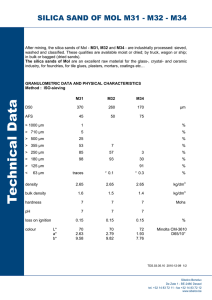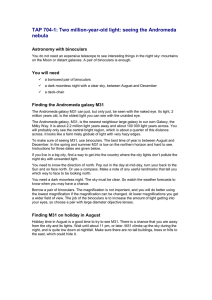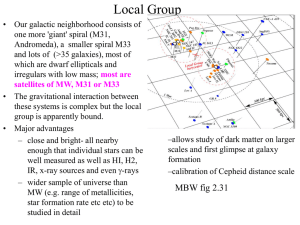Assignment #11 PHYSICS 8.284 Due 11:04am Wednesday 10 May 2006
advertisement
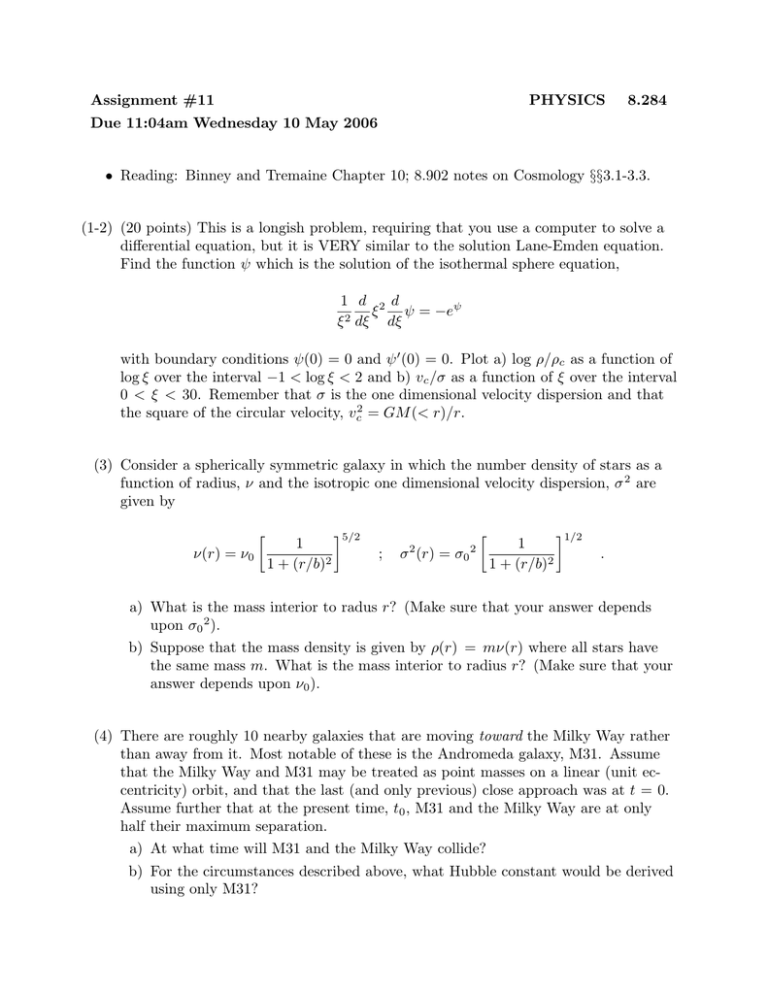
Assignment #11 PHYSICS 8.284 Due 11:04am Wednesday 10 May 2006 • Reading: Binney and Tremaine Chapter 10; 8.902 notes on Cosmology §§3.1-3.3. (1-2) (20 points) This is a longish problem, requiring that you use a computer to solve a differential equation, but it is VERY similar to the solution Lane-Emden equation. Find the function � which is the solution of the isothermal sphere equation, 1 d 2 d π � = −e� π 2 dπ dπ with boundary conditions �(0) = 0 and � � (0) = 0. Plot a) log ψ/ψc as a function of log π over the interval −1 < log π < 2 and b) vc /ν as a function of π over the interval 0 < π < 30. Remember that ν is the one dimensional velocity dispersion and that the square of the circular velocity, vc2 = GM (< r)/r. (3) Consider a spherically symmetric galaxy in which the number density of stars as a function of radius, � and the isotropic one dimensional velocity dispersion, ν 2 are given by �(r) = �0 � 1 1 + (r/b)2 5/2 ; 2 ν (r) = ν0 2 � 1 1 + (r/b)2 1/2 . a) What is the mass interior to radus r? (Make sure that your answer depends upon ν0 2 ). b) Suppose that the mass density is given by ψ(r) = m�(r) where all stars have the same mass m. What is the mass interior to radius r? (Make sure that your answer depends upon �0 ). (4) There are roughly 10 nearby galaxies that are moving toward the Milky Way rather than away from it. Most notable of these is the Andromeda galaxy, M31. Assume that the Milky Way and M31 may be treated as point masses on a linear (unit ec­ centricity) orbit, and that the last (and only previous) close approach was at t = 0. Assume further that at the present time, t0 , M31 and the Milky Way are at only half their maximum separation. a) At what time will M31 and the Milky Way collide? b) For the circumstances described above, what Hubble constant would be derived using only M31? (5) Suppose that the universe has � = 1 and that a particular cluster of galaxies is thought to have collapsed from a spherically symmetric uniform density pertuba­ tion only yesterday, so that ψp /ψu = 18� 2 . How big was the perturbation that gave rise to this cluster when the CMB photons left the surface of last scattering, at 1 + z � 1500. The key trick here will be to equate times for the universe and for the perturbation, and then compare densities.
